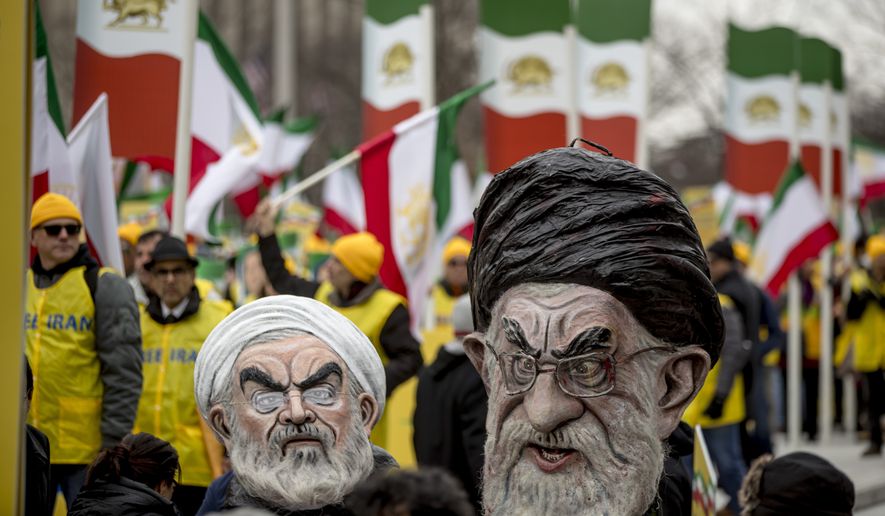Hundreds of Iranian-Americans gathered just blocks from the White House to rally Friday for a regime change in Tehran.
With Iranian flags and banners promoting democracy in Iran in hand, the demonstrators with the Organization of Iranian American Communities (OIAC) called for an end to the Islamic Republic’s hard-line theocracy.
Rally organizers said the goal of the event, which included speeches from Maryam Rajavi, president-elect of the National Council of Resistance of Iran, and Rep. Brad Sherman, California Democrat, is to spur debate in Washington and increase U.S. support for the uprising for democracy in the country.
The OIAC is a grass-roots arm of the National Council of Resistance of Iran, an exile Iranian dissident group that has long called for a democratic government in Tehran and criticized the Islamic Republic’s human rights record.
The National Council of Resistance of Iran backed the ouster of the Shah of Iran with other revolutionary groups in 1979 but clashed with the Islamist forces led by Ayatollah Ruhollah Khomeini afterward. After losing a vicious power struggle, NCRI leaders now say they renounce violence.
The group is credited with exposing secretive Iranian nuclear facilities in the early 2000s. It also has had a contentious relationship with Washington, and was listed it as a terrorist organization by the State Department until 2012.
But it has gained new clout and visibility under President Trump, with several top aides, including presidential attorney Rudolph W. Giuliani and National Security Adviser John R. Bolton, having deep ties to the exile group.
Linda Chavez, who served in the administrations of Presidents Ronald Reagan and George H.W. Bush and spoke at the rally, told The Washington Times that while she is a “frequent critic” of President Trump, she wanted “to support what the Trump administration has done in terms of its refusal to take part in [the Iran nuclear deal] that I think was very ill considered.”
In May, Mr. Trump announced plans to pull out of the Obama-era deal that lifted economic sanctions on Iran in return for Tehran halting its nuclear program until 2025.
The administration has since restored sanctions aimed at Iran’s shipping, energy and financial industries, but concerns continue about the country’s missile program, support of terrorism and ability to rush into the production of nuclear weapons by the time the deal would have ended.
Mr. Trump’s decision to pull out of the deal saw renewed support on Capitol Hill last week, when Senate Armed Services Committee Chairman James M. Inhofe said he intends to include language in the next defense authorization act to cement the president’s decision to exit the deal and reinstate economic sanctions on Tehran.
Supporters who attended Friday’s rally expressed support to eliminate Iran’s nuclear program.
“What the Iran agreement did was supposedly to halt the development, but it did not require that a complete denuclearization take place. And that’s what we hope to aim for,” Ms. Chavez said.
Jamal Khoshnood, who came to the U.S. after being detained in Iran for nearly a decade, told The Times that a denuclearized Iran “is helping the process of the peace.”
“They cannot have that kind of nuclear weapons because it’s threatening all of the world,” he added, “not the just the Iranian people.”
Other demonstrators saw hope in Ms. Rajavi’s plan that calls for “complete gender equality in political, social and economic arenas,” and women’s rights to education, employment, marriage and clothing.
“The fact that this whole event is led by a woman is just really exciting to see,” said a student who attended Friday’s event. “Gender equality I think is something that every country strives for these days.”
• Lauren Toms can be reached at lmeier@washingtontimes.com.




Please read our comment policy before commenting.